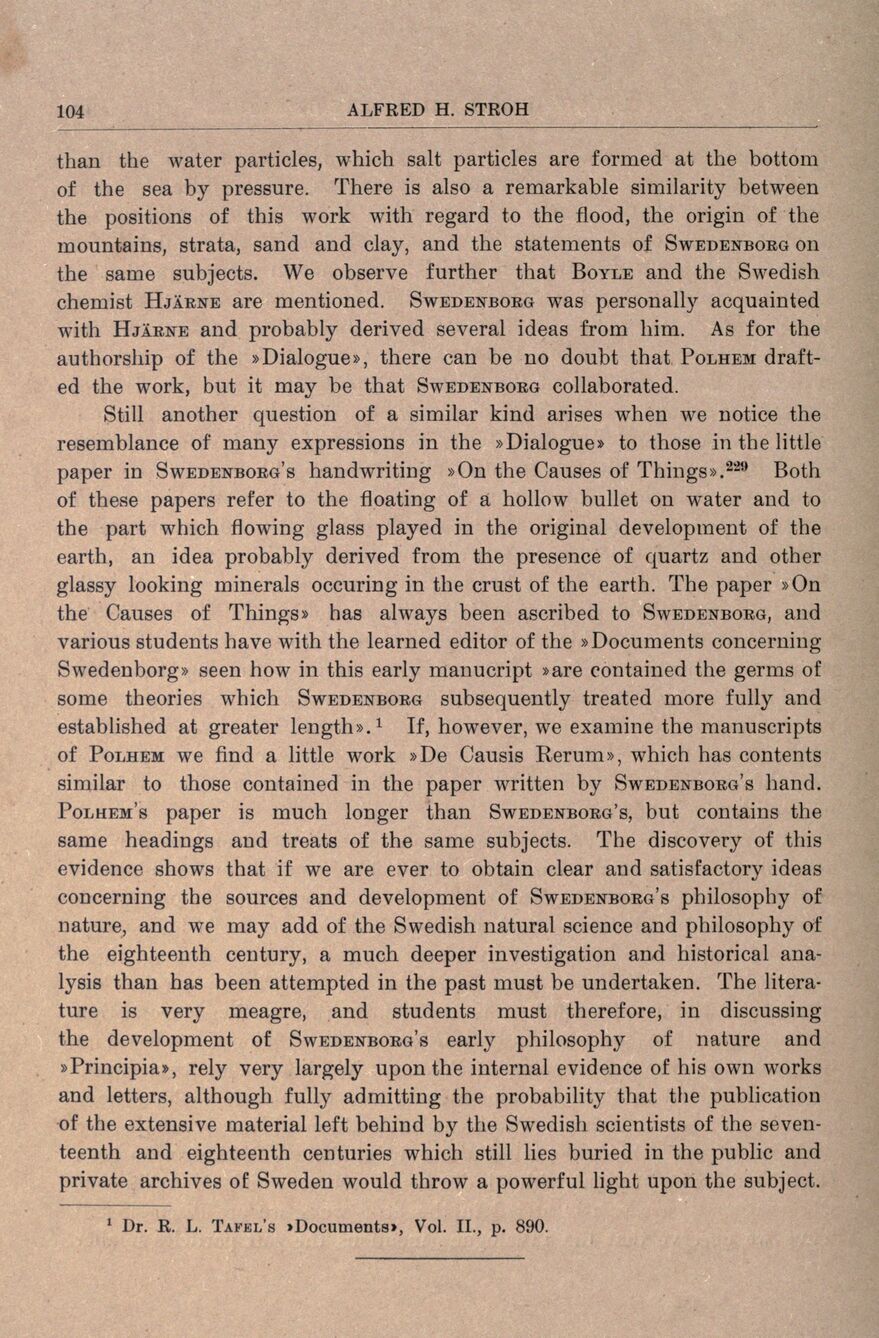
Full resolution (JPEG) - On this page / på denna sida - Sidor ...

<< prev. page << föreg. sida << >> nästa sida >> next page >>
Below is the raw OCR text
from the above scanned image.
Do you see an error? Proofread the page now!
Här nedan syns maskintolkade texten från faksimilbilden ovan.
Ser du något fel? Korrekturläs sidan nu!
This page has never been proofread. / Denna sida har aldrig korrekturlästs.
than the water particles, which salt particles are formed at the bottom
of the sea by pressure. There is also a remarkable similarity between
the positions of this work with regard to the flood, the origin of the
mountains, strata, sand and clay, and the statements of Swedenborg on
the same subjects. We observe further that Boyle and the Swedish
chemist Hjärne are mentioned. Swedenborg was personally acquainted
with Hjärne and probably derived several ideas from him. As for the
authorship of the »Dialogue», there can be no doubt that Polhem
draft-ed the work, but it may be that Swedenborg collaborated.
Still another question of a similar kind arises when we notice the
resemblance of many expressions in the »Dialogue» to those in the little
paper in Swedenborg’s handwriting »On the Causes of Things».229 Both
of these papers refer to the floating of a hollow bullet on w^ater and to
the part which flowing glass played in the original development of the
earth, an idea probably derived from the presence of quartz and other
glassy looking minerals occuring in the crust of the earth. The paper »On
the Causes of Things» has always been ascribed to Swedenborg, and
various students have with the learned editor of the »Documents concerning
Swedenborg» seen how in this early manucript »are contained the germs of
some theories which Swedenborg subsequently treated more fully and
established at greater length».1 If, however, we examine the manuscripts
of Polhem we find a little work »De Causis Rerum», which has contents
similar to those contained in the paper written by Swedenborg’s hand.
Polhem’s paper is much longer than Swedenborg’s, but contains the
same headings and treats of the same subjects. The discovery of this
evidence shows that if we are ever to obtain clear and satisfactory ideas
concerning the sources and development of Swedenborg’s philosophy of
nature, and we may add of the Swedish natural science and philosophy of
the eighteenth century, a much deeper investigation and historical
analysis than has been attempted in the past must be undertaken. The
litera-ture is very meagre, and students must therefore, in discussing
the development of Swedenborg’s early philosophy of nature and
»Principia», rely very largely upon the internal evidence of his own works
and letters, although fully admitting the probability that the publication
of the extensive material left behind by the Swedish scientists of the
seven-teenth and eighteenth centuries which still lies buried in the public and
private archives of Sweden would throw a powerful light upon the subject.
1 Dr. R. L. Tafel’s »Documents», Vol. II., p. 890.
<< prev. page << föreg. sida << >> nästa sida >> next page >>